|
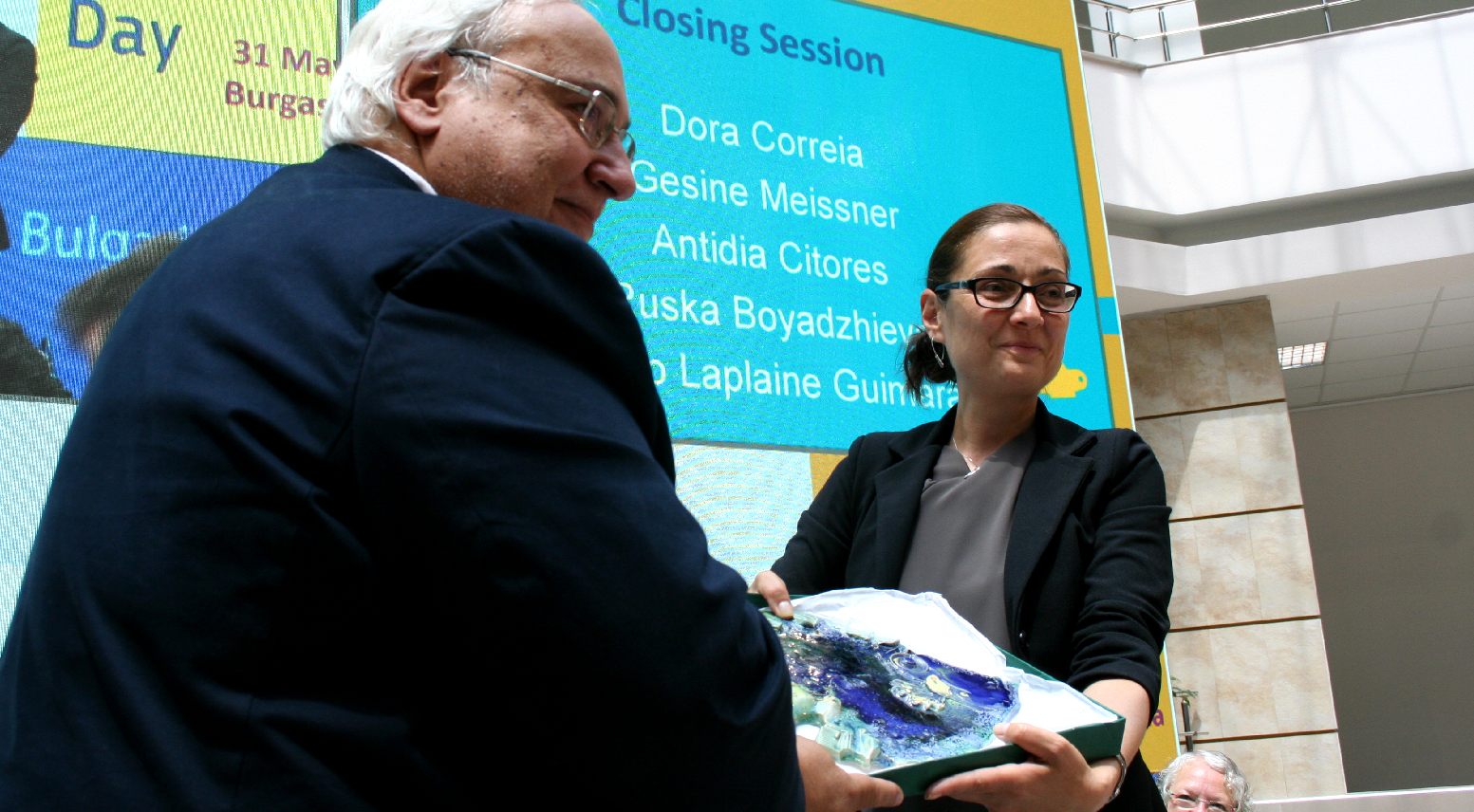
HANDOVER
CEREMONY - Dr Alberto Laplaine Guimarães accepts a gift
of maritime art from Ruska Boyadzhieva. Alberto is the Secretary General
of Lisbon City Council. Copyright © photograph June 1 2018 Cleaner
Ocean Foundation.
Dr Alberto Laplaine Guimãraes
is the Secretary General of the City of Lisbon. He graduated in Law from the Faculty of Law of the Universidade Clássica de Lisboa in 1984. He was a fellow of the
German Marshal Fund and Auditor of National Defence in 2004.
Alberto currently serves as Secretary General of the City of Lisbon, Vice-President of the Casa de América Latina, Director of the City of Lisbon Foundation and Director of the Literary Guild. He is a member of the European Academy of Arts and Sciences. He also served as Secretary of the State Council of the Portuguese Republic within the Office of the President of the Portuguese Republic. He was also awarded several national and foreign decorations and is a Grand Officer of the National Order of Infante Dom Henrique by decree of HE Jorge Sampaio, President of the Portuguese Republic.
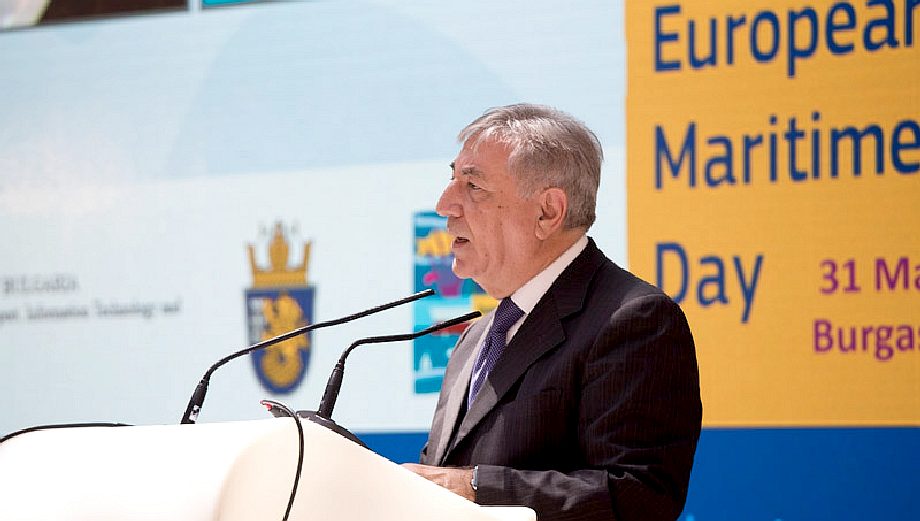
WELCOME
MESSAGE - Karmenu Vella giving the opening speech on the 31st May 2018
at Burgas in Bulgaria.
ABOUT
LISBON
Lisbon is Portugal’s hilly, coastal capital city. From imposing São Jorge Castle, the view encompasses the old city’s pastel-colored buildings, Tagus Estuary and Ponte 25 de Abril suspension bridge. Nearby, the National Azulejo Museum displays 5 centuries of decorative ceramic tiles. Just outside Lisbon is a string of Atlantic beaches, from Cascais to
Estoril.
Lisbon enjoys a
Mediterranean climate. It has one of the warmest winters of any metropolis in
Europe, with average temperatures 15 °C (59 °F) during the day and 8 °C (46 °F) at night from December to February. The typical summer season lasts about four months, from June to September, although also in April temperatures sometimes reach around 25 °C (77.0 °F).
The Lisbon region is the wealthiest region in Portugal and it is well above the European Union's GDP per capita average – it produces 45% of the Portuguese GDP. Lisbon's economy is based primarily on the tertiary sector. Most of the headquarters of multinationals operating in Portugal are concentrated in the Grande Lisboa Subregion, specially in the Oeiras municipality. The Lisbon Metropolitan Area is heavily industrialized, especially the south bank of the Tagus
river
(Rio Tejo).
The Lisbon region is rapidly growing, with GDP (PPP) per capita calculated for each year as follows: €22,745
(2004) – €23,816 (2005) – €25,200 (2006) – €26,100 (2007). The Lisbon metropolitan area had a GDP amounting to $96.3 billion, and $32,434 per capita.
The country's chief seaport, featuring one of the largest and most sophisticated regional markets on the Iberian Peninsula, Lisbon and its heavily populated surroundings are also developing as an important financial centre and a dynamic technological hub. Automobile manufacturers have erected factories in the suburbs, for example,
AutoEuropa.
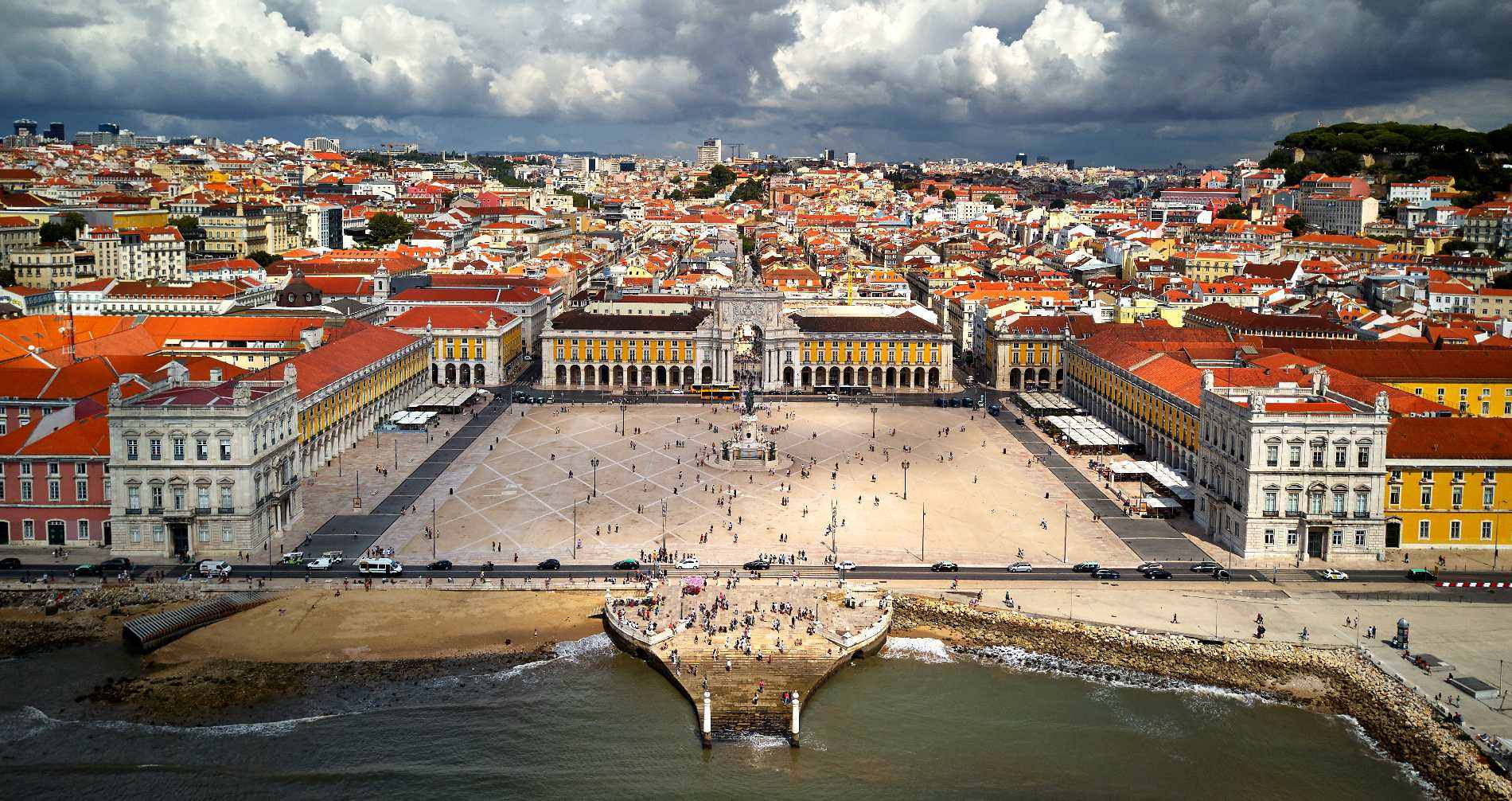
THE
CITY
After Athens, Lisbon, the capital of Portugal, is Europe’s second-largest city. The city is built on a series of steep hills that overlook the Rio Tejo and other scenic vistas visible from all directions. Lisbon is Portugal’s star attraction that offers all the delights expected from Europe’s most captivating, soulful and picturesque capitals.
The city of Lisbon is one of the world’s greatest historical cities. It is filled with majestic monasteries and Gothic cathedrals. For the tourists looking for a more overwhelming taste of history, visiting Belem, a monument packed neighborhood is a must. The neighborhood features Belem Tower, Monument to the Discoveries, a well concealed subway for pedestrians, Coach Museum, which houses the world’s largest collection of royal coaches
and vehicles, and the Statue of Afonso de Albuquerque, a massive statue representing Afonso de Albuquerque that looks towards the sea. Equally fascinating is Alfama, which is the city’s oldest district. It is a labyrinthine street filled with medieval architecture, including the Castle of Sao Jorge and the medieval Lisbon Cathedral.
isbon is also termed as the city of the oceans, since it has the distinction of being the only European capital that is so close to sandy beaches. It also has some of the largest aquariums in Europe. This unique quality allows tourists to combine the rich culture and history of the city with some light fun on the beach.
Tourists looking for other more peaceful and relaxing settings can visit the various parks and gardens spread across the city. The most popular of these Jardim Zoologica, a zoo that has a wide variety of exotic animals, Ajuda Botanical Gardens, a ten acre garden laid out by the Portuguese Royal family after the 1755 earthquake and Lisbon Botanical gardens, built several hundred years ago with a massive collection of plants that back several centuries.

AIR
TRAVEL
Humberto Delgado Airport is located within the city limits. It is the headquarters and hub for TAP Portugal as well as a hub for Easyjet, Azores Airlines, Ryanair, EuroAtlantic Airways, White Airways, and Hi Fly. A second airport has been proposed, but the project has been put on hold because of the Portuguese and European economic crisis, and also because of the long discussion on whether a new airport is needed. However, the last proposal is military air base in Montijo that would be replaced by a civil airport. So, Lisbon would have two airports, the current airport in north and a new in the south of the city.
Cascais Aerodrome, 20 km West of the city centre, in Cascais, offers commercial domestic flights.
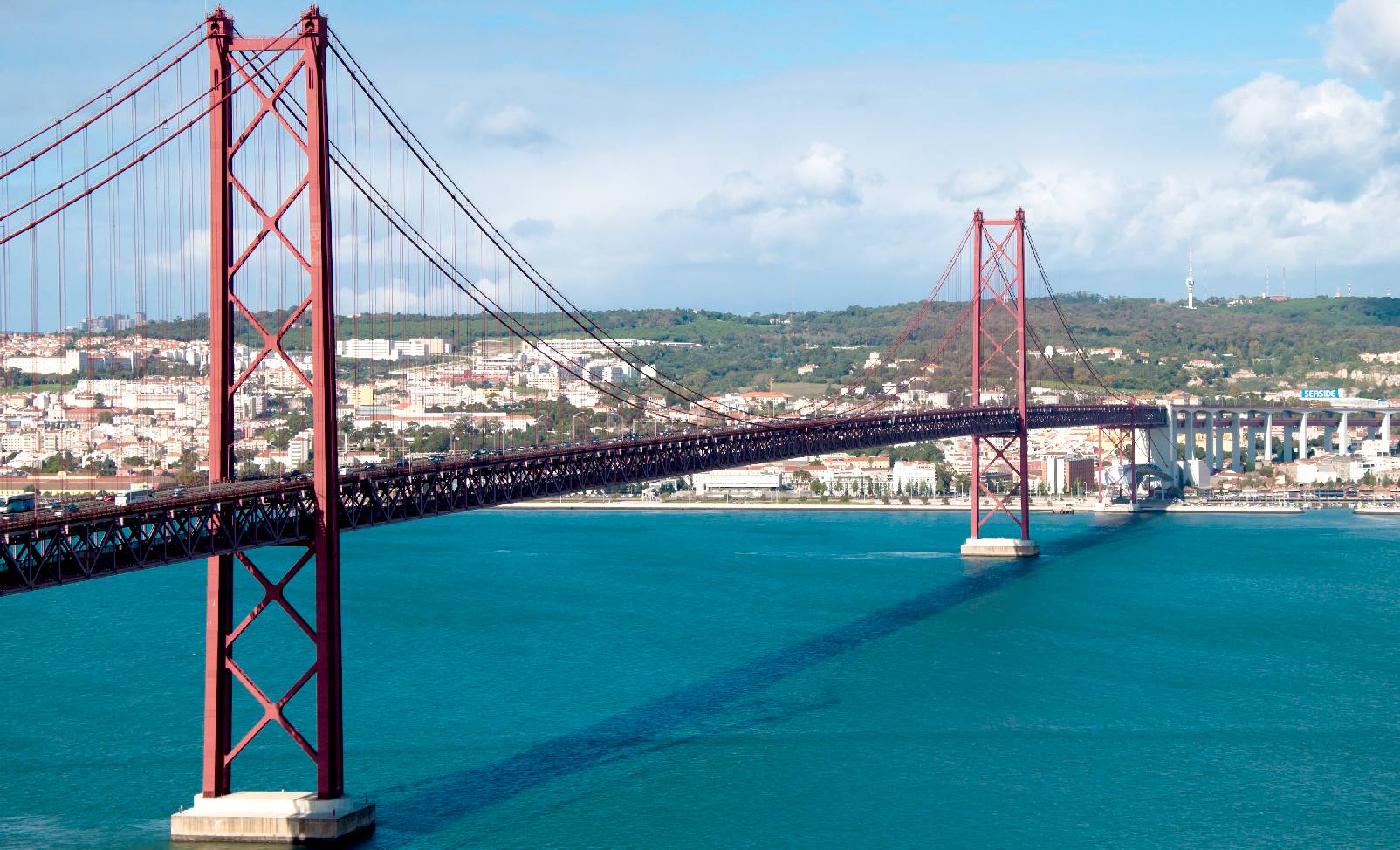
ECONOMY
The Lisbon region is the wealthiest region in Portugal and it is well above the European Union's GDP per capita average – it produces 45% of the Portuguese GDP. Lisbon's economy is based primarily on the tertiary sector. Most of the headquarters of multinationals operating in Portugal are concentrated in the Grande Lisboa Subregion, specially in the Oeiras municipality. The Lisbon Metropolitan Area is heavily industrialized, especially the south bank of the Tagus river (Rio Tejo).
The Lisbon region is rapidly growing, with GDP (PPP) per capita calculated for each year as follows: €22,745 (2004) – €23,816 (2005) – €25,200 (2006) – €26,100 (2007). The Lisbon metropolitan area had a GDP amounting to $96.3 billion, and $32,434 per capita.
The country's chief seaport, featuring one of the largest and most sophisticated regional markets on the Iberian Peninsula, Lisbon and its heavily populated surroundings are also developing as an important financial centre and a dynamic technological hub. Automobile manufacturers have erected factories in the suburbs, for example, AutoEuropa.

AQUARIUM
- The Oceanário de Lisboa believes that everyone is responsible for protecting the oceans.
Marine ecosystems are amongst Portugal’s most important assets. In this sense, it is imperative to ensure their integrity, now and in the future, by financing and supporting scientific research.
Oceanário de Lisboa and the Oceano Azul Foundation present the 2nd
edition of their Ocean Conservation Fund. The theme is “Threatened marine species. From Science to Awareness.” The amount available for this edition is 150,000 euros. Support will be given to new projects, developed within Portugal or abroad, that contribute to greater knowledge of marine species classified as endangered on the Red List of the ‘International Union for Conservation of Nature’
(IUCN), in other words, species classified as Critically Endangered, Endangered and Vulnerable. Applications must be completed by 13th July, 2018.
Oceanário de Lisboa, Esplanada D. Carlos I - 1990-005 Lisboa.
Email:
info@oceanario.pt Phone: +351 218 917 000
Lisbon has the largest and most developed mass media sector of Portugal, and is home to several related companies ranging from leading television networks and radio stations to
major newspapers.
The Euronext Lisbon stock exchange, part of the pan-European Euronext system together with the stock exchanges of Amsterdam, Brussels and Paris, is tied with the
New York Stock Exchange since 2007, forming the multinational NYSE Euronext group of stock exchanges.
Lisbonite industry has very large sectors in oil, as refineries are found just across the Tagus, textile mills, shipyards and
fishing.
Before Portugal's sovereign debt crisis and an EU-IMF rescue plan, for the decade of 2010 Lisbon was expecting to receive many state funded investments, including building a new airport, a new bridge, an expansion of 30 km (18.64 mi) underground, the construction of a mega-hospital (or central hospital), the creation of two lines of a TGV to join Madrid, Porto, Vigo and the rest of Europe, the restoration of the main part of the town (between the Marquês de Pombal roundabout and Terreiro do Paço), the creation of a large number of bike lanes, as well as modernization and renovation of various facilities.
Lisbon was the 18th most "livable city" in the world in 2015 according to lifestyle magazine Monocle.
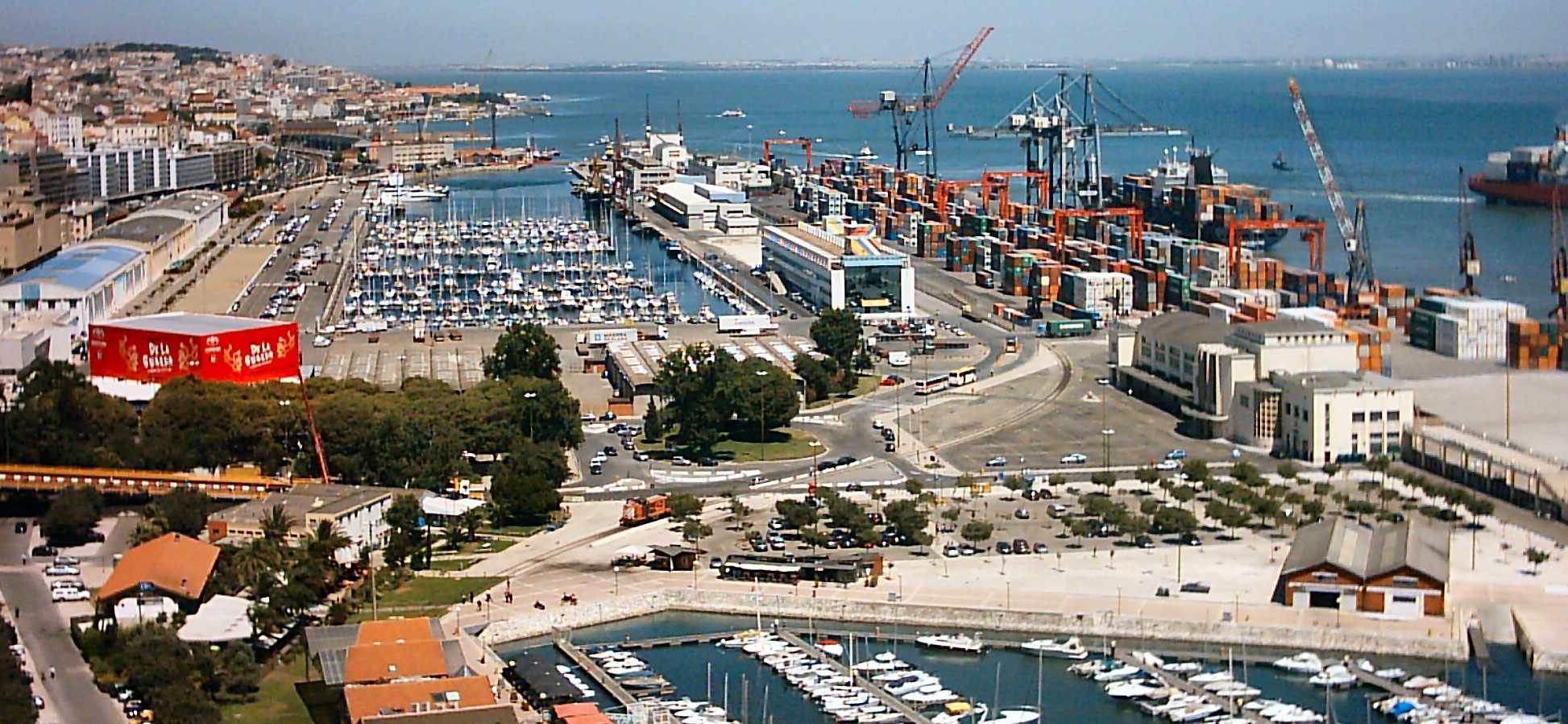
PORT OF
LISBON
The Port of Lisbon (Portuguese: Porto de Lisboa) is the third largest port in Portugal, located where the
River Tagus and the
Atlantic Ocean meet, in the Portuguese capital of Lisbon. Due to its strategic location on the Portuguese coast between Europe, Africa, and the
Atlantic, the port is one of the most accessed and utilized in Europe, and is close to the cruise ships terminals.

EMD
HEADLINE THEMES
*
Brussels 2008: "A regional approach to the implementation of Maritime
Policy"
*
Rome 2009: "Integrated Maritime Policy and the contribution of
maritime clusters"
*
Gijón 2010: "How to foster innovation?"
*
Gdansk 2011: "Maritime Policy: Putting People First"
*
Gothenburg 2012: "Sustainable Growth from the Oceans, Seas and
Coasts"
*
Valletta 2013: "Coastal Development and Sustainable Maritime
Tourism"
*
Bremen 2014: "Innovation driving Blue Growth"
*
Piraeus 2015: "Ports and Coasts, Gateways to Maritime Growth"
*
Turku 2016: "Investing in blue growth – smart and sustainable
solutions"
*
Poole 2017:
"The Future of our Seas"
*
Burgas 2018: Bulgaria "TBA" *
Lisbon 2019: Portugal "TBA"
*
Cork
2020: Ireland "TBA"
*
Den Helder 2021: The Netherlands "TBA" *
Ravenna 2022: Italy "TBA" *
Brest 2023: France "TBA" *
Svendborg 2024: Denmark "TBA"
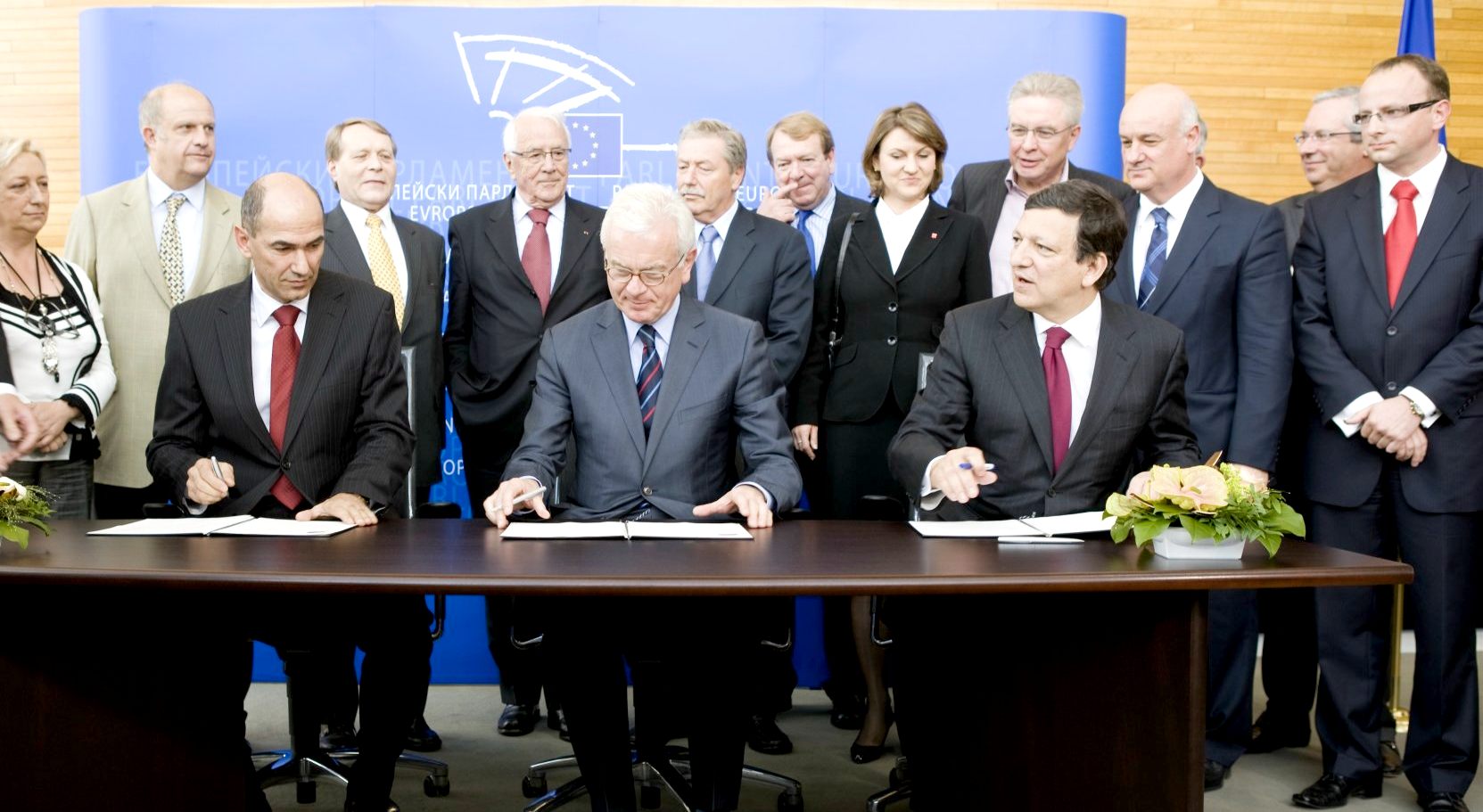
CREATION -
The European Maritime Day (EMD) was officially created on 20 May 2008
where the President of the European Parliament Hans-Gert Pöttering,
Council President Janez Janša, and Commission President José Manuel
Barroso signed a Joint Tripartite Declaration establishing it.
CONFERENCE
Programme
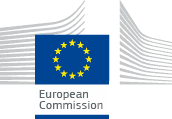
CONTACTS
Enterprise Europe Network South West
Business West, Leigh Court
Abbots Leigh, Bristol, BS8 3RA
LINKS
& REFERENCE
https://www.oceanario.pt/en
http://www.portodelisboa.pt/
http://www.atl-turismolisboa.pt/
http://www.visitportugal.com/en
https://en.wikipedia.org/wiki/Lisbon
http://paradiseintheworld.com/life-in-lisbon-portugal/
http://ec.europa.eu/maritimeaffairs/maritimeday/en/2014
http://ec.europa.eu/maritimeaffairs/maritimeday/en/home http://ec.europa.eu/maritimeaffairs/maritimeday/en http://ec.europa.eu/maritimeaffairs/maritimeday/en/about-emd http://ec.europa.eu/maritimeaffairs/maritimeday/en/poole-2017 http://ec.europa.eu/maritimeaffairs/maritimeday/en/exhibition

ACIDIFICATION
- ADRIATIC
- ARCTIC
- ATLANTIC
- BALTIC
- BAY
BENGAL - BERING
- CARIBBEAN
- CORAL
- EAST
CHINA SEA
ENGLISH
CH - GOC
- GULF
GUINEA - GULF
MEXICO - INDIAN
-
IOC
- IRC
- MEDITERRANEAN
- NORTH
SEA - PACIFIC
- PERSIAN
GULF - SEA
JAPAN - STH
CHINA - PLASTIC
- PLANKTON
- PLASTIC
OCEANS - SEA
LEVEL RISE - SOUTHERN
- UNCLOS
- UNEP
WOC
- WWF
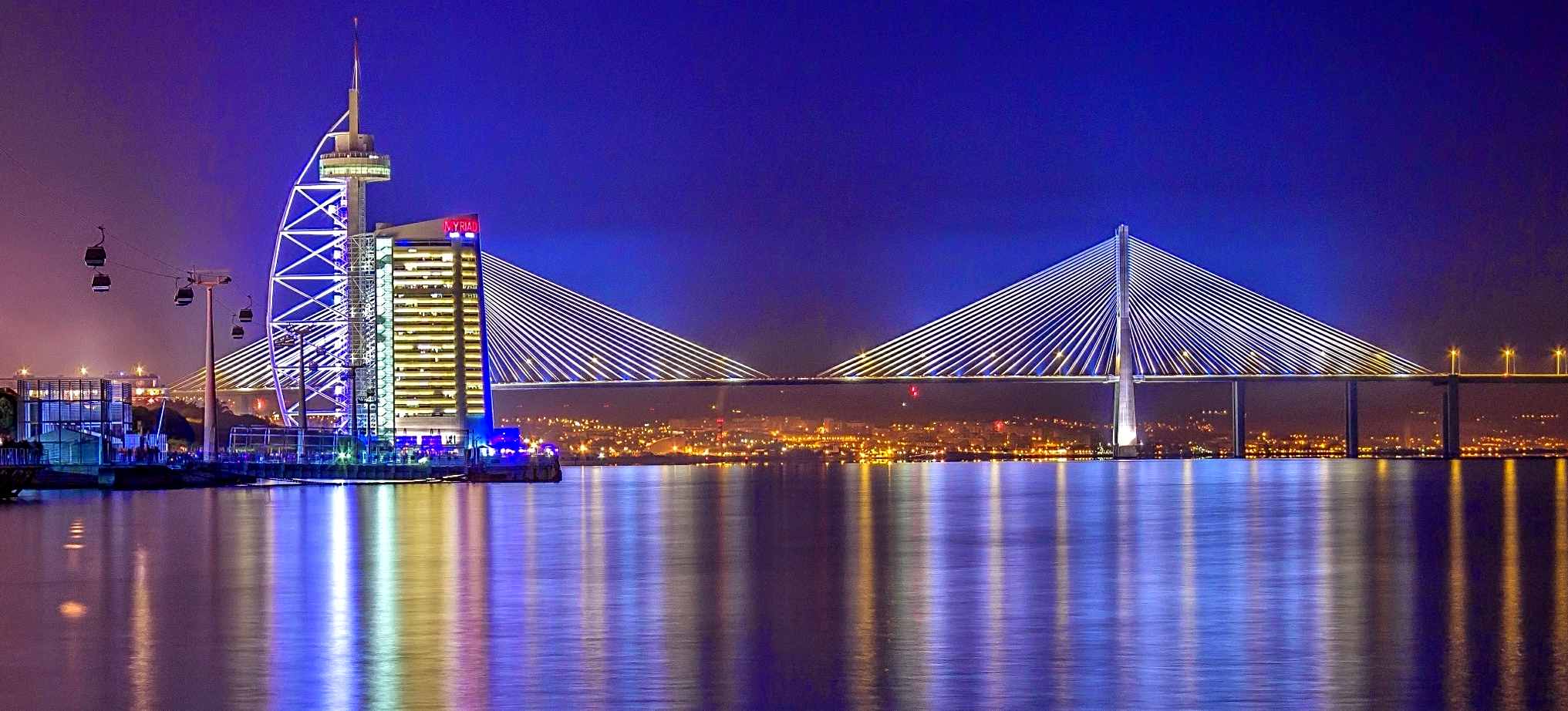
|









